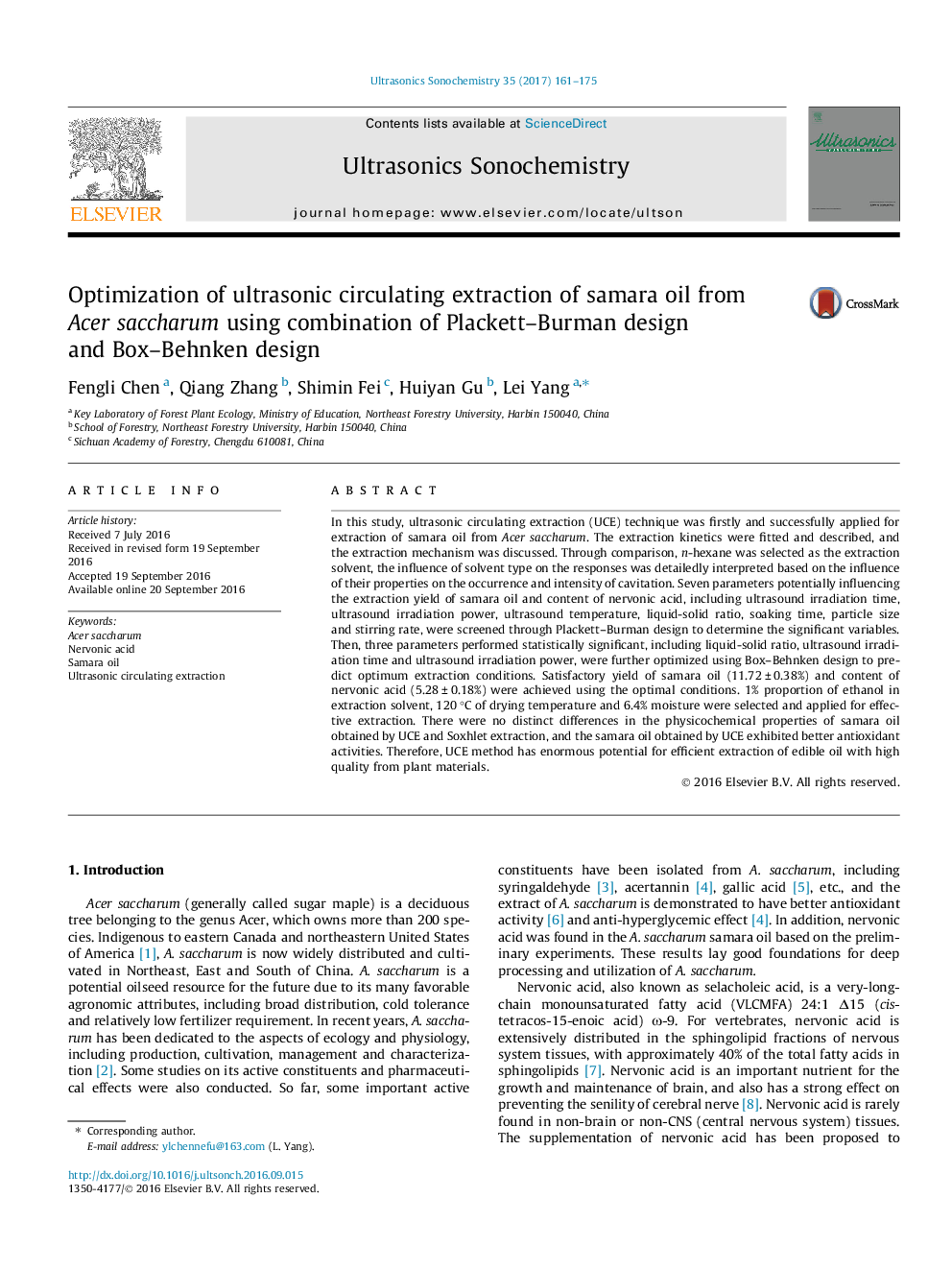| Article ID | Journal | Published Year | Pages | File Type |
|---|---|---|---|---|
| 5144875 | Ultrasonics Sonochemistry | 2017 | 15 Pages |
â¢Ultrasonic circulating extraction was applied firstly in obtaining vegetable oil.â¢Parameter optimization was completed by Plackett-Burman and Box-Behnken design.â¢Mechanism was interpreted through the effect of solvent properties on cavitation.â¢Extraction kinetics was studied and discussed using second-order kinetic model.â¢Characteristics of Acer saccharum samara oil were determined and described.
In this study, ultrasonic circulating extraction (UCE) technique was firstly and successfully applied for extraction of samara oil from Acer saccharum. The extraction kinetics were fitted and described, and the extraction mechanism was discussed. Through comparison, n-hexane was selected as the extraction solvent, the influence of solvent type on the responses was detailedly interpreted based on the influence of their properties on the occurrence and intensity of cavitation. Seven parameters potentially influencing the extraction yield of samara oil and content of nervonic acid, including ultrasound irradiation time, ultrasound irradiation power, ultrasound temperature, liquid-solid ratio, soaking time, particle size and stirring rate, were screened through Plackett-Burman design to determine the significant variables. Then, three parameters performed statistically significant, including liquid-solid ratio, ultrasound irradiation time and ultrasound irradiation power, were further optimized using Box-Behnken design to predict optimum extraction conditions. Satisfactory yield of samara oil (11.72 ± 0.38%) and content of nervonic acid (5.28 ± 0.18%) were achieved using the optimal conditions. 1% proportion of ethanol in extraction solvent, 120 °C of drying temperature and 6.4% moisture were selected and applied for effective extraction. There were no distinct differences in the physicochemical properties of samara oil obtained by UCE and Soxhlet extraction, and the samara oil obtained by UCE exhibited better antioxidant activities. Therefore, UCE method has enormous potential for efficient extraction of edible oil with high quality from plant materials.
